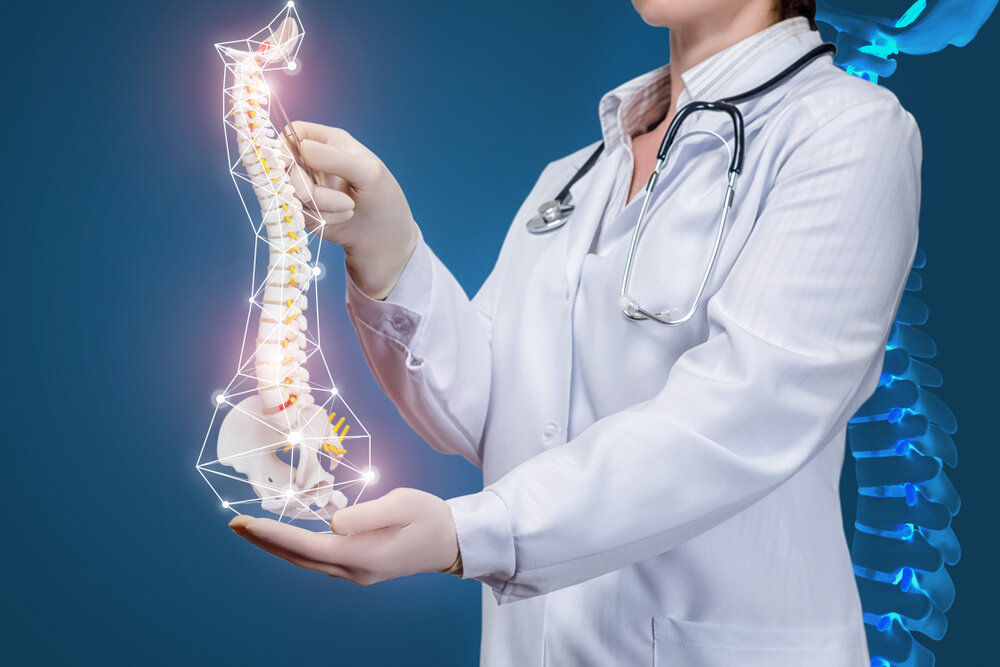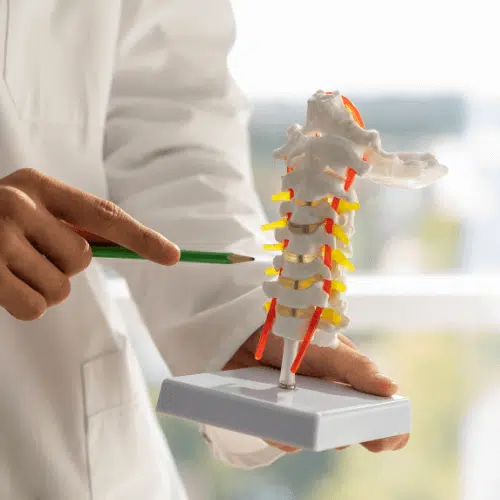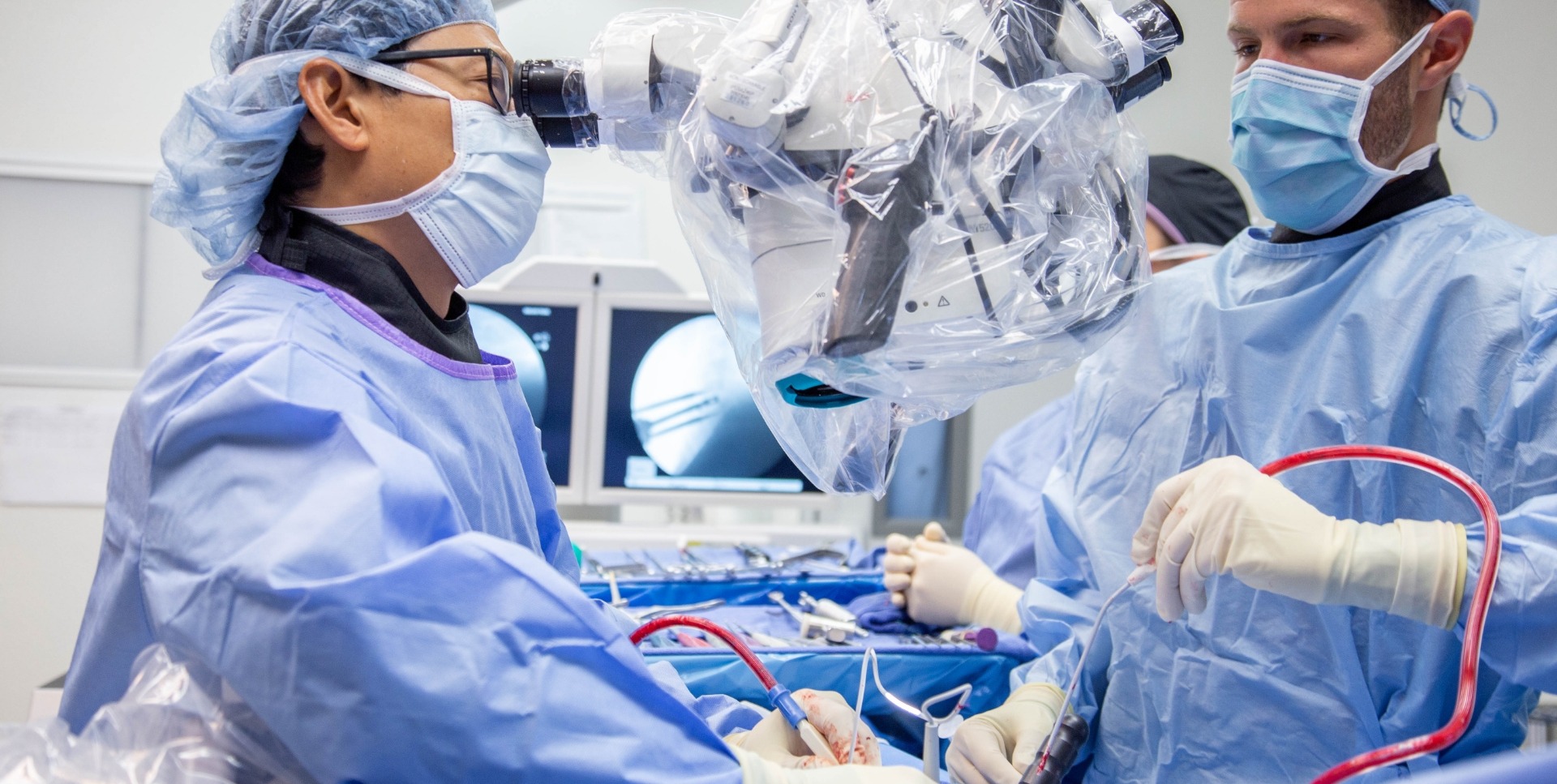The Value of Follow-Up Treatment with the Best Spine Surgeons in St Louis MO
The Value of Follow-Up Treatment with the Best Spine Surgeons in St Louis MO
Blog Article
A Review of Spinal Column Conditions That Usually Outcome in Surgical Treatments
Spinal column problems such as herniated discs, spinal stenosis, and degenerative disc illness frequently necessitate surgical interventions when traditional treatments stop working to relieve persistent symptoms. Comprehending the nuances of each problem and the corresponding surgical alternatives, such as discectomy or back fusion, is vital for efficient management.
Herniated Discs
Although several people with herniated discs might find alleviation through traditional therapies, surgical treatment ends up being a needed consideration when signs intensify or continue - best spine surgeons in st louis mo. A herniated disc takes place when the soft inner gel of a spine disc extends through its outer layer, potentially leading and compressing close-by nerves to pain, numbness, or weak point in the extremities
Traditional administration typically consists of physical treatment, pain medications, and corticosteroid shots, which intend to minimize inflammation and enhance feature. In situations where these methods fail to reduce incapacitating symptoms, surgical options might be checked out.
One of the most common operation for herniated discs is a discectomy, which entails the elimination of the herniated portion of the disc to relieve pressure on the influenced nerve origin. In a lot more extreme situations, back combination might be necessary to support the influenced vertebrae.
People are recommended to review the prospective threats and advantages of surgical treatment with their doctor to make a notified choice. Eventually, the goal of any type of medical intervention is to recover feature, relieve discomfort, and boost general lifestyle for individuals experiencing from herniated discs.
Back Stenosis
Spine stenosis takes place when the spaces within the spinal column narrow, bring about boosted stress on the spinal cord and nerves. This problem can develop in different areas of the spine, including the back and cervical locations, typically because of age-related adjustments, such as degenerative disc illness, arthritis, or thickening of tendons.
Patients with spine constriction may provide with signs that consist of pain, pins and needles, prickling, or weak point, primarily in the legs or arms. These signs can be exacerbated by tasks that entail standing or strolling, often leading people to look for alleviation with traditional therapies like physical therapy, drugs, or epidural steroid injections.
However, when these non-surgical interventions fall short to give adequate alleviation, surgical choices may be considered. Typical medical treatments for spine constriction include laminectomy, which entails the removal of component of the vertebra to minimize pressure, and back blend, which stabilizes the damaged area.
Spondylolisthesis
Spondylolisthesis happens when one vertebra slides forward over an additional, resulting in misalignment of the spine. This problem can arise from numerous variables, consisting of genetic problems, injury, or degenerative adjustments in the spinal column. have a peek here It is most commonly observed in the lumbar region, especially at the L4-L5 and L5-S1 degrees.

When non-surgical strategies stop working to alleviate signs and symptoms or when considerable nerve compression is existing, surgical treatment may be called for. Surgical options can include back blend or decompression procedures, aimed at restoring placement and easing neurological signs and symptoms.
Degenerative Disc Disease

The problem can be diagnosed with a mix of professional evaluation, imaging studies, and patient history. When these methods stop working to offer adequate relief, surgical treatments may be considered.
Surgical choices for look these up DDD may consist of spine fusion or fabricated disc substitute, aimed at supporting the impacted segment and easing pain (best spine surgeons in st louis mo). Eventually, the choice of therapy is embellished, taking into consideration the extent of the condition, patient health and wellness, and lifestyle factors
Back Tumors

Back growths can develop from various aspects, consisting of hereditary predisposition, ecological impacts, and pre-existing clinical conditions. Clients might present with a variety of symptoms, consisting of localized pain, neurological deficits, weak point, or modifications in bowel and bladder function, depending on the tumor's size and location.
Surgical treatment might be warranted to relieve signs and symptoms, acquire a biopsy, or get rid of the tumor totally. The objective of surgical treatment is typically to unwind neural elements and support the spine. Early discovery and treatment published here are critical for optimizing end results in clients with back growths.
Conclusion
In recap, spine problems such as herniated discs, spinal constriction, spondylolisthesis, degenerative disc condition, and back tumors regularly demand surgical intervention as a result of their possible to create considerable pain and practical impairment. While conservative therapies might use temporary relief, medical options come to be critical when symptoms persist or worsen. Timely medical diagnosis and treatment play a vital role in recovering function and boosting the quality of life for affected individuals, highlighting the importance of detailed back care.

Report this page